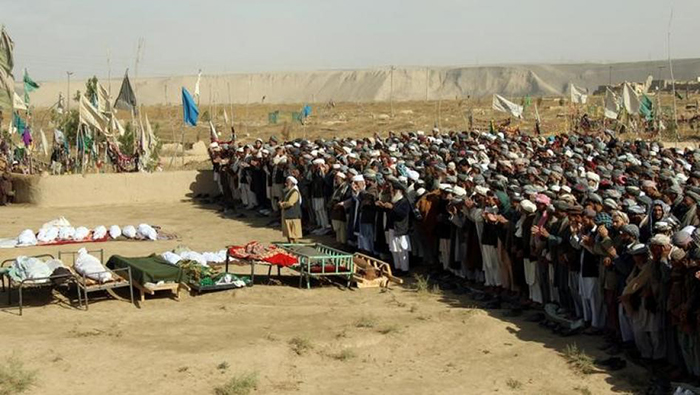The UN Assistance Mission in Afghanistan (UNAMA) has documented a total of 1,783 civilian casualties (573 killed and 1.210 wounded) in the first quarter of 2021 suggesting a 29 percent increase as compared with the same period in 2020.
“Of particular concern is the 37 percent increase in the number of women killed and injured and a 23 percent increase in child casualties compared with the first quarter of 2020,” the UNAMA report noted, pointing out to a week-long reduction in violence between the Afghan government and the Taliban in February 2020 as a significant factor behind the reduced scale of harm to civilians in the first quarter of 2020.
Pointing out the increase in civilian casualties, the UNAMA said that it highlights the “urgent need” for measures to reduce violence and the overarching need to reach a lasting peace settlement. “It urges parties to prioritize civilians and agree to reduce violence as they negotiate for peace, with the Islamic holy month of Ramadan as a starting point,” the UNAMA appealed to the Taliban and the Afghan government.
Causes of civilian casualties
As per the UNAMA report, ground engagements between the warring parties caused 38 percent of the overall civilian casualties, followed by non-suicide IEDs (31 percent), and targeted killings (19 percent) in the first three months of 2021.
According to the report, the number of civilian casualties from ground engagements increased by 56 percent, and from non-suicide IEDs by 117 percent. “UNAMA documented an increase in the number of targeted killings, while airstrikes and suicide attacks caused far fewer civilian casualties,” it said about the targeted violence which took scores of lives in different parts of the country, including in the capital Kabul.
Who harmed the civilians?
In a quarterly report, the UNAMA has found that the Anti-Government Elements are responsible for the majority of the civilian casualties, 61 percent, and the Pro-Government Forces continued to commit nearly one quarter (27 percent) of the total civilian casualties. “UNAMA documented increased in the number of civilian casualties attributed to both the Taliban (up 39 percent) and the Afghan National Army (up 35 percent) with the Taliban responsible for 43.5 percent of all civilian casualties and the Afghan National Army responsible for 17 percent.”
The UN mission further has expressed deep concern regarding the targeted violence against civilians by Anti-Government Elements. “UNAMA remains deeply concerned about the continued deliberate targeting of civilians by Anti-Government Elements, particularly through targeted killings, and reiterates that such attacks are serious violations of international humanitarian law and may amount to war crimes,” it stated while pointing out to target killing of two female judges in Kabul by unknown men and assassination of three female media workers in Jalalabad by the Islamic State Khurasan Province as recent examples.
Moreover, the Mission raised its concern about the use of explosives with a wide-area effect in populated areas and the use of non-suicide IEDs by Anti-Government Elements which have dramatically increased the civilian casualties. “The vast majority of the harm to civilians from non-suicide IEDs occurred as a result of magnetic and/or remote detonated IEDs, from which UNAMA documented a 215 percent increase in the number of civilian casualties compared with the same period in 2020.”
As per the report, non-suicide vehicle-borne IEDs have also increased with an impact in furthering civilian casualties.
Conversely, UNAMA documented a reduction in the number of civilian casualties caused by pressure-plate IEDs, an encouraging trend that if continued, can have a significant life-saving impact.
There was a continued dearth of civilian casualties in the first three months of this year caused by airstrikes conducted by the international military forces and as well as by suicide attacks of the Anti-Government Elements since 2020. “As noted in UNAMA’s 2020 protection of civilians reports, these incident types have caused significantly fewer civilian casualties since the 29 February 2020 United States-Taliban agreement,” part of the report reads.
The number of civilian casualties caused by the airstrikes attributed to the Afghan Air Force, however, has increased by 30 percent compared to the same period in 2020.
The UNAMA has expressed concern regarding the continuation of attacks on health and education in the first quarter of 2021 at similar levels to the year before.




